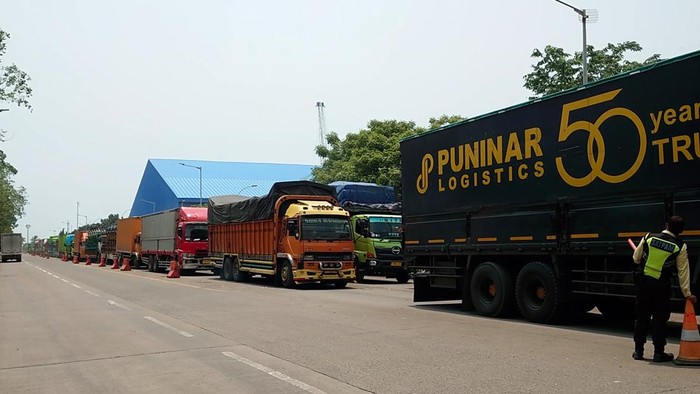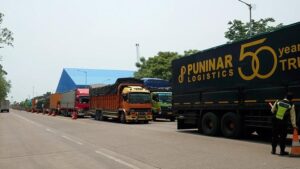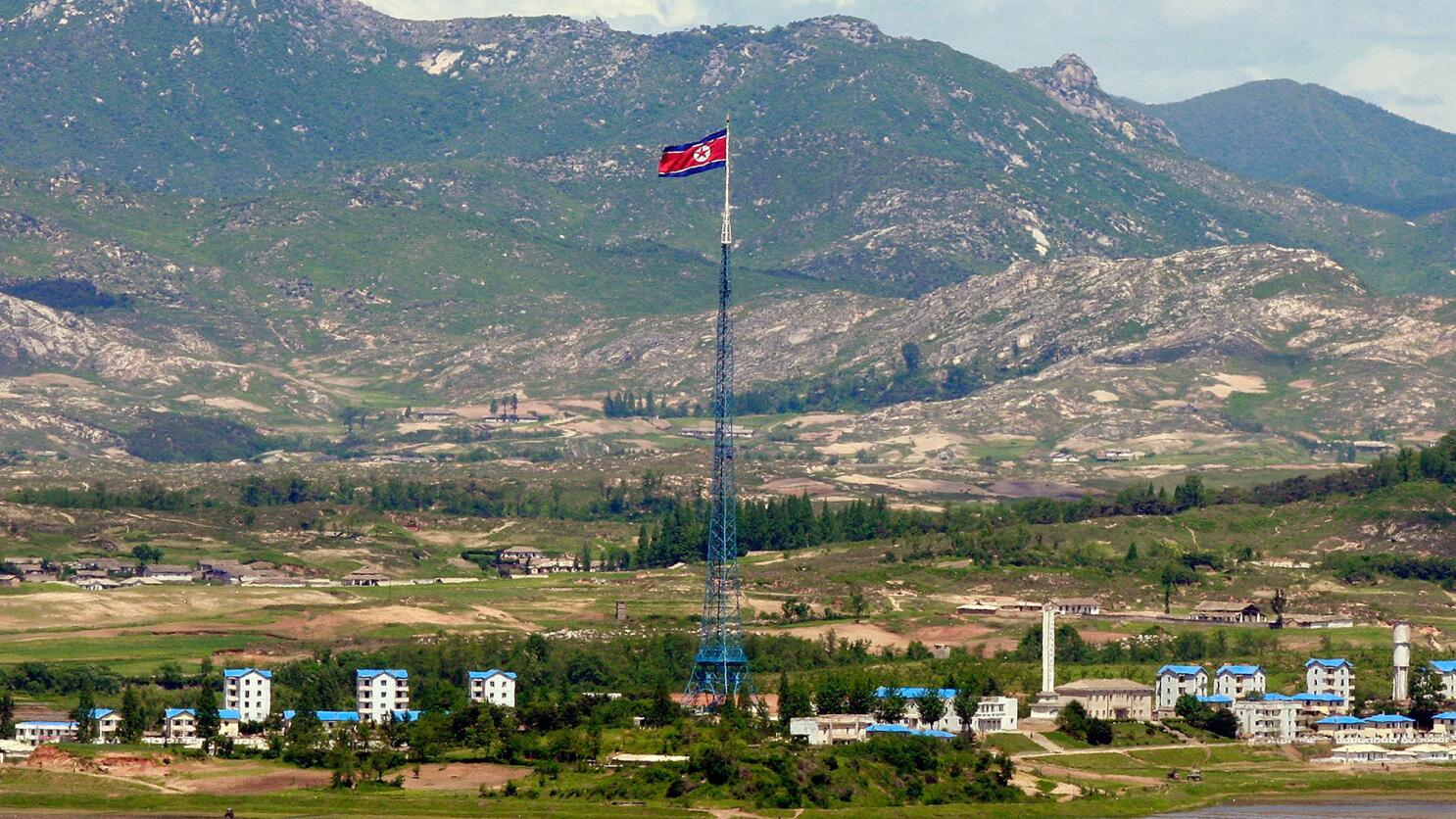

painterpainter.net, Jakarta – Welcome to the hustle and bustle of Ciwandan Port, where a sea of trucks forms a long queue as they eagerly await their turn to enter. The sight of these towering vehicles lined up for miles is not just a mere traffic jam but a reflection of the thriving trade and economy in Indonesia. Let’s dive into the factors behind this phenomenon, its impact on commerce, and the ongoing efforts to streamline operations at one of Indonesia’s busiest ports.
Factors contributing to the problem
The long queues of trucks at Ciwandan Port are not a random occurrence but rather a result of various factors contributing to the issue. One major factor is the lack of infrastructure and road capacity leading to the port, causing congestion during peak hours. Additionally, inefficient logistics operations and outdated technology play a role in slowing down the entry process for trucks.
Moreover, bureaucratic red tape and paperwork requirements can also contribute to delays as each truck needs to go through multiple checkpoints before entering the port premises. Inadequate staffing levels or training could further exacerbate this problem by causing inefficiencies in processing truck entries. Furthermore, unpredictable weather conditions or natural disasters can disrupt normal operations at the port, leading to even longer queues as trucks wait for clearance. All these factors combined create a challenging environment for both truck drivers and port authorities alike. Addressing these underlying issues is crucial to improving efficiency at Ciwandan Port and reducing the long queues that currently plague it.
Impact on trade and economy
The long queues of trucks at Ciwandan Port have a significant impact on trade and the economy. Delays in transporting goods lead to increased costs for businesses, affecting their competitiveness in the market. The congestion also results in missed delivery deadlines, leading to dissatisfied customers and potential loss of future business opportunities. Furthermore, the inefficiency at the port hampers the smooth flow of imports and exports, disrupting supply chains and causing fluctuations in prices. This instability can deter foreign investors looking for reliable trading partners, ultimately impacting Indonesia’s economic growth prospects.
In addition, truck drivers spending long hours waiting in line lose out on other potential job opportunities or face financial burdens due to extended idle time. These ripple effects not only affect individual livelihoods but also contribute to overall economic slowdowns within local communities surrounding Ciwandan Port. Addressing these challenges is crucial not only for streamlining operations at Ciwandan Port but also for sustaining healthy trade relations and fostering economic development across industries nationwide.
Efforts made by local government and port authorities to address the issue
Efforts made by local government and port authorities to address the long queues of trucks at Ciwandan Port have been commendable. The authorities have recognized the urgency of the situation and are implementing various strategies to alleviate congestion. One key initiative is the optimization of operational processes within the port, such as streamlining cargo handling procedures and improving overall efficiency. Additionally, investments in infrastructure upgrades, including expanding terminal capacity and enhancing road networks leading to the port, are underway to accommodate increasing trade volumes.
Collaboration between stakeholders is also crucial in finding sustainable solutions. By engaging with trucking companies, implementing advanced scheduling systems, and promoting off-peak hours for cargo pick-up and delivery, significant progress has been made in reducing wait times for trucks entering Ciwandan Port. Continuous monitoring and evaluation of these efforts will be essential to ensure their effectiveness in addressing the issue in a holistic manner.
Possible solutions for reducing truck queues at Ciwandan Port
One possible solution to alleviate the long queues of trucks at Ciwandan Port is implementing an advanced appointment system. By allowing truck drivers to schedule their arrival times in advance, congestion can be minimized as trucks will enter the port in a more organized manner. Another effective strategy could involve optimizing the port’s operational efficiency through better coordination between various stakeholders. This may include streamlining paperwork processes, improving communication channels, and enhancing overall logistics management.
Investing in technology such as automated gate systems and digital tracking tools can also help expedite truck entry and exit procedures at Ciwandan Port. By embracing innovation, the port can enhance its capacity while reducing wait times for truckers. Furthermore, expanding infrastructure like additional lanes or designated parking areas for trucks awaiting clearance can contribute to smoother traffic flow within the port premises. Upgrading road networks leading to Ciwandan Port could also play a significant role in easing congestion on surrounding routes. By exploring these diverse solutions and possibly combining them, Ciwandan Port authorities have the opportunity to address the pressing issue of long truck queues effectively and sustainably.
Case study: Successful implementation of solutions in other ports
Have you ever wondered how other ports have successfully tackled the issue of long truck queues? Let’s take a closer look at a case study where innovative solutions were implemented to streamline port operations and reduce congestion. In Port Klang, Malaysia, authorities introduced advanced technology such as an automated gate system and real-time tracking for truck movements. This resulted in smoother traffic flow and minimized waiting times for trucks entering the port.
Similarly, in Rotterdam, Netherlands, the implementation of appointment systems for truck arrivals significantly reduced queue lengths by efficiently scheduling truck entries based on cargo volumes and available resources. By studying these successful cases, Ciwandan Port can learn valuable insights on adopting modern technologies and strategic planning to alleviate congestion issues effectively. It’s inspiring to see how innovation can transform logistics operations for the better!
Conclusion
The long queues of trucks at Ciwandan Port have been a persistent issue affecting trade and the economy in Indonesia. Various factors contribute to this problem, including inadequate infrastructure, inefficient processes, and high cargo volumes. These bottlenecks not only slow down the flow of goods but also incur additional costs for businesses.
Local government authorities and port officials have been working together to address this challenge by implementing measures such as optimizing operational procedures, increasing capacity through infrastructure development, and leveraging technology for better coordination. While progress has been made, more efforts are needed to alleviate the congestion effectively.







